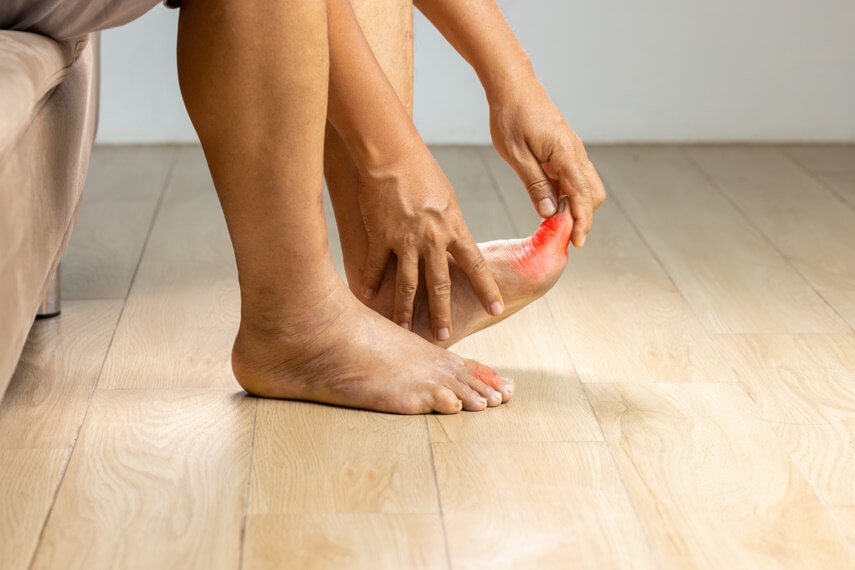Getting a Prosthetic Leg? Here’s what you need to know first.
A prosthesis for legs can be a life-changing solution for those who have lost a limb due to injury, illness, or chronic conditions like diabetes. It’s more than just a medical device, it’s a pathway back to independence, movement, and confidence.
Whether you're exploring your options or preparing for a fitting, this guide breaks down the key things you need to know about leg prosthetic types, their fitting, and how to manage them, especially for patients with diabetic needs.
Who Needs a Prosthetic Leg?
People may need a prosthesis for their legs due to:
- Traumatic injury or accident.
- Peripheral artery disease (PAD).
- Cancer-related amputations.
- Severe infections or gangrene.
- Complications from diabetic foot care.
Prosthetics can restore daily functionality, improve posture, reduce strain on the body, and significantly enhance quality of life.
Types of Prosthetic Limbs for Legs
There are several types of prosthetic limbs, depending on the level and nature of the amputation:
- Below-Knee Prosthesis Leg (Transtibial): Designed for those who retain their knee joint. Offers greater mobility and a shorter learning curve.
- Above-Knee Prosthesis Leg (Transfemoral): Includes an artificial knee joint. Requires more adaptation and physical training.
- Hip Disarticulation Prosthesis: For amputations at the hip level. Less common and more complex.
- Artificial Foot Prosthetics: These complement prosthetic legs and range from basic feet to dynamic, energy-storing models.
Choosing the Right Leg Prosthetic Type
Selecting the best leg prosthetic type depends on:
- Amputation level
- Lifestyle (active vs. sedentary)
- Age and weight
- Medical conditions (especially for those requiring special diabetic foot care)
- Budget and insurance coverage
Talk to your prosthetist about what fits your goals—whether it’s walking, running, or resuming daily work.
The Fitting & Rehabilitation Process
Getting a prosthesis for legs involves more than just attaching a device:
- Evaluation & Custom Measurement.
- Test Socket Trial.
- Final Prosthesis Fabrication.
- Gait Training & Rehabilitation.
- Ongoing Adjustments.
The process may take several weeks or months. You’ll also need regular follow-ups to monitor wear, comfort, and alignment, especially for below-knee prosthesis legs, where pressure distribution is critical.
Special Considerations for Diabetic Patients
Diabetic foot care is vital to prosthetic success. Diabetes can affect:
- Nerve sensation (neuropathy).
- Skin healing.
- Risk of infection.
Patients with diabetes should:
- Use custom socket liners to reduce friction
- Check for ulcers or irritation daily
- Attend frequent prosthetic and podiatric checkups
Proper diabetic foot care before and after amputation can significantly impact the long-term usability of your prosthesis.
Conclusion
Receiving a prosthesis for your legs is a major milestone toward reclaiming your mobility and independence. Whether you're getting a below-knee prosthesis leg, advanced artificial foot prosthetics, or exploring various leg prosthetic types, it's important to work with experienced professionals and prioritise proper care, especially for those managing diabetic foot care concerns.
Knowledge is your best tool. With the right choices and consistent support, life after amputation can be active, fulfilling, and full of possibilities.
FAQs About Getting a Prosthetic Leg
What is a prosthetic leg?
A prosthetic leg is an artificial limb designed to replace a missing leg, helping individuals regain mobility and independence.
How soon after amputation can I get a prosthetic leg?
Typically, you can be fitted for a prosthetic leg once your residual limb has fully healed, which usually takes 6 to 12 weeks, but this varies by individual.
What types of prosthetic legs are available?
There are various types depending on activity level and needs, including basic mechanical limbs, microprocessor-controlled knees, and specialized sports prosthetics.
How much does a prosthetic leg cost?
Costs vary widely based on the type and technology used. In India, basic prosthetics may start at around ₹50,000, while advanced models can cost several lakhs.
Will it be painful to wear a prosthetic leg?
There may be some discomfort initially as you adjust. Proper fitting and regular follow-ups help minimise pain and improve comfort.
How long does it take to learn to walk again?
Rehabilitation time varies but generally ranges from a few weeks to several months, including physical therapy to build strength and balance.
How do I care for my prosthetic leg?
Regular cleaning, proper socket maintenance, and routine check-ups with your prosthetist are essential to keep the prosthetic functioning well.
Can I participate in sports or physical activities?
Yes! Many prosthetic legs are designed for sports, running, swimming, and other activities, tailored to your lifestyle.
Will my prosthetic leg need repairs or replacements?
Yes, prosthetics require maintenance and may need replacement parts over time due to wear and tear.
Where can I get a prosthetic leg fitted in India?
There are many specialised centres and hospitals across India, including in Ahmedabad, Surat, Mumbai, and Delhi. It’s important to choose a certified prosthetist or hospital with experience.



.jpg)

